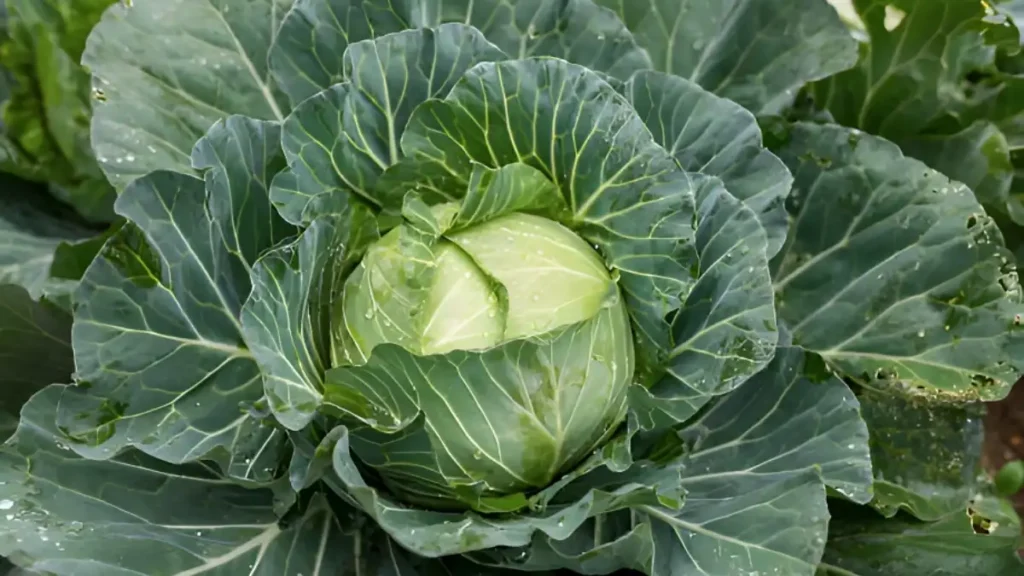A member of the brassica family, which also includes Brussels sprouts, broccoli, and cauliflower, cabbage is a versatile and nutrient-rich vegetable. Cabbage, which has thick, leafy heads, is available in different varieties, including red, green, and savoy, each with distinct tastes and textures. Learning how to grow cabbage is simple, and it is used in a variety of meals around the world, from salads and soups to fermented foods like sauerkraut and kimchi. Cabbage is tasty and a great source of vitamins, fiber, and antioxidants, making it a nutritious complement to any dish. Thus, growing cabbage from seed is a satisfying endeavor that enables you to produce healthy, fresh heads in your garden. Cabbage grows well in cool climates and is easy to cultivate with the right care, whether you plan to harvest it in the spring or fall.
When is the ideal time for planting cabbage?
The environment and variety will determine the best time to sow cabbage. Cabbage planting season is fairly long. Since cabbage is a cool-season crop, early spring or late summer are the ideal times to sow it. You can plant it in the fall for a winter harvest in areas with mild winters. When planting in the spring, sow seeds indoors six to eight weeks before the last anticipated frost date, then move them outside once the ground is suitable for planting. Planting cabbage in late summer helps minimize bolting in milder climates by allowing the vegetable to mature in cooler fall temperatures. Transplanting early cabbage will enable it to mature before summer heat waves arrive.
Suggestions for growing cabbage from seed:
With the correct method, growing cabbage from seed in the garden can be easy and productive. Here are some proven strategies for growing cabbage from seed outdoors:
1. See how to grow cabbage from seed
- Cabbage seedlings can be grown from seed in early spring. Sow seeds 50-60 days before frost, planting three or four seeds per cell. To thrive, plants need bright, full sunlight. Use grow lights to start many plants. After seedlings emerge, divide larger plants by thinning them. To ensure proper growth, divide larger plants into smaller ones. To prepare for autumn crop planting, direct-sow seeds in mid-late summer or sow seeds under lights for early July planting.
2. How to sow seeds in the garden for growing cabbage
- Cabbage, a cool-season crop, can be planted earlier than tomatoes due to its frost-free date. Seed packaging helps count frost-free dates, but hardening is still recommended before planting.
- To start growing cabbage from seed in the garden, pick a sunny location with friable, well-draining soil. A week or so before planting, amend the soil with a large quantity of compost. When digging time comes, plant your cabbage seedlings in rows separated by 24 to 36 inches (60 to 90 cm), or around 15 to 23 inches (38 to 60 cm). Even though the plants might appear tiny right now, you want to give them enough space to grow into that dense cluster of leaves during the season!
- After planting and throughout the growing season, give cabbage plants some water. As they age, cabbages need nitrogen and organic fertilizer. Don’t let the soil get too wet. Weed the area and thin the seedlings for appropriate spacing to keep weeds from competing for nutrients. Lightly cover the planting space with straw or crushed leaves for extra nutrients.
3. Watching for harm caused by pests
- Pests like cabbage worms, flea beetles, cabbage root maggots, cabbage loopers, and cutworms can harm cabbage plants. A small white butterfly circling them may be a cabbage moth, but they lay cabbage worm eggs in brassicas and can quickly consume your vegetables.
4. How to know when to harvest cabbage
- After 70–100 days of transplanting, harvest cabbage, making sure the heads are firm and suitable for the variety. Using a sharp knife, cut at the base, leaving the outer leaves whole. Eliminate any yellowing or damaged leaves. To maintain freshness, store in a cold, humid location. Depending on the type and conditions, freshness can endure for weeks to months.
Conclusion:
Growing cabbage from seed in your yard can be a fun and productive experience if done right. These are some recommendations to help you choose healthy and bountiful cabbage varieties, prepare the soil, transplant seedlings, and control pests. For many months to come, your garden will produce robust, tasty cabbage heads if you pay close attention to this cool-season vegetable’s requirements.
Certainly! If you’d like to learn more, please consider following our WhatsApp Channel: Harvest Gardening
A frequently asked questions:
Q1: What is the best fertilizer for cabbage?
A1: A balanced fertilizer (10-10-10) that has equal amounts of nitrogen, phosphorus, and potassium is the best for cabbage. But for leafy development, cabbage also needs extra nitrogen, so 15-10-10) is a slightly greater nitrogen fertilizer that can yield better results.
Q2: What is the trick to growing cabbage?
A2: Providing ample light, well-drained soil, and steady moisture is essential for successful cabbage growth. Mulch and appropriate plant spacing are other ways to help conserve moisture and keep the roots cool.

